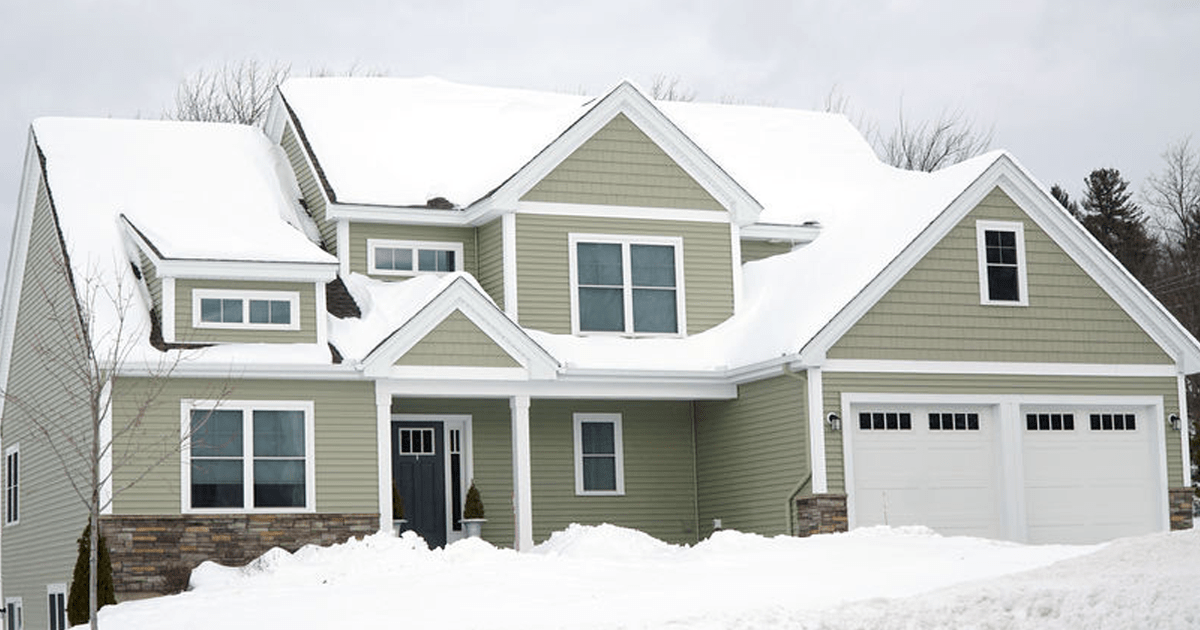ROOF VENTS NOT JUST FOR SUMMER
When people think of roof vents, they often think about cooling a hot summer attic. But roof vents are as important during winter months.
YOUR ATTIC SHOULD BE COOL IN WINTER
Your attic in winter should be only a few degrees warmer than external air. And the only way to keep your attic cool in winter is proper air circulation.
INADEQUATE ATTIC VENTILATION
During winter, windows and doors are left closed for months. As a result, the ambient air in living spaces is heated. Moisture vapors from cooking, cleaning, and bathing are carried by warm air into your attic space. Without proper attic ventilation, moisture can build up on attic surfaces leading to mold, mildew, and wood rot.
INTAKE AND EXHAUST VENTS
Attic ventilation is divided into two categories – intake vents and exhaust vents. Intake vents draw outside air into the attic, while exhaust vents allow hot, moist, or stagnant air to flow out of the attic.
INTAKE VENTS
SOFFIT/EAVE VENTS
Intake vents play an essential role in keeping your attic cool in winter (and summer). Intake vents are typically installed at the soffit or eave. These vents draw external air into the attic.
We always caution homeowners to verify that all soffit and eave vents are correctly installed. Too often, we find external vents are blocked (holes are not cut thru to the attic space).
Don’t assume you have ventilation just because you see ventilation screens or vents at the eave. Always check!
Additionally, we find vents are blocked by insulation within the attic because baffles are not installed or are improperly sized.
EXHAUST VENTS
STATIC ROOF VENTS
Static roof vents allow air to escape from the attic. Usually, multiple static roof vents are needed to adequately ventilate an average size attic. Roof vents should be evenly spaced across the roof and installed below the peak. Static vents do not require electricity to work and thus are less expensive to operate. Attic vents are available in various colors designed to complement the roof color.
RIDGE VENTS
Ridge vents, also called ridge cap vents, are installed as you might guess, at the ridge of the roof. This type of vent is installed along the peak of the roof to allow moist, hot air to exhaust from the attic. Unfortunately, ridge vents can be problematic. During freezing temperatures, these vents can freeze over.
When using a ridge vent, it is necessary to have an equal or larger amount of intake ventilation from the soffit area of the roof. This allows for air to enter at the lower vents and travel up to the top of the roof as it heats and exits out of the ridge vent. An inadequate amount of soffit ventilation will act to retard the effectiveness of your ridge vent.
POWERED ROOF VENTS (ATTIC FANS)
A powered roof vent, commonly called an Attic Fan, can dramatically improve the flow of air through your attic. Attic fans are covered by a dome to keep the elements from entering the opening in your roof. The fan is connected to a thermostat or a humidistat/thermostat combo that dictates when the fan should activate based on current temperature or moisture levels in the attic. One attic fan can produce the same results as multiple static roof vents.
BATH FAN & DRYER EXHAUST VENTS
Bathroom Exhaust Fans and Dryer Exhaust tubes should always be exhausted externally via a dampered roof cap. Never exhaust your bathroom fan or dryer into your attic. The warm moist air exhausted from both of these sources can lead to mold and damage to your roof and home structure. If you purchased this home after your bathroom fans or dryer exhaust were installed, you might want to make sure these are venting properly.
WE ARE ATTIC AIR
Click here to learn more about roof vents and attic ventilation on our website.
Attic Air provides insulation and attic ventilation, including roof vents, intake vents, attic fans, bathroom exhaust fans, whole-house fans, and more. Call us for a free attic assessment at 630.830.3870


